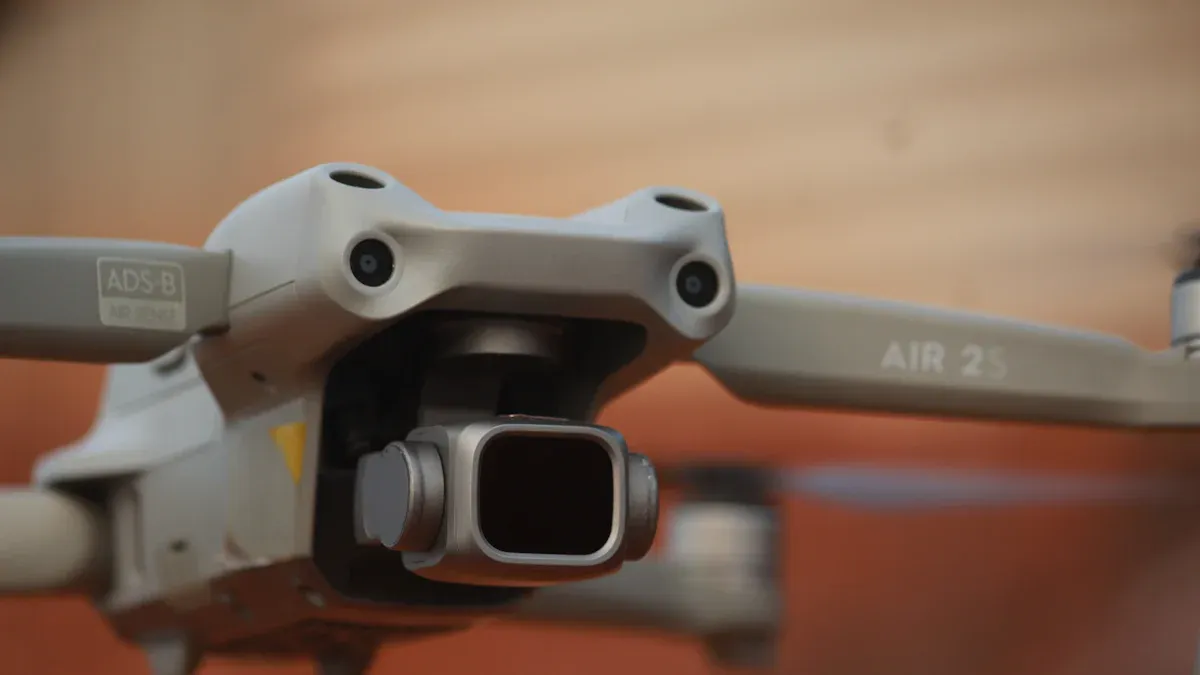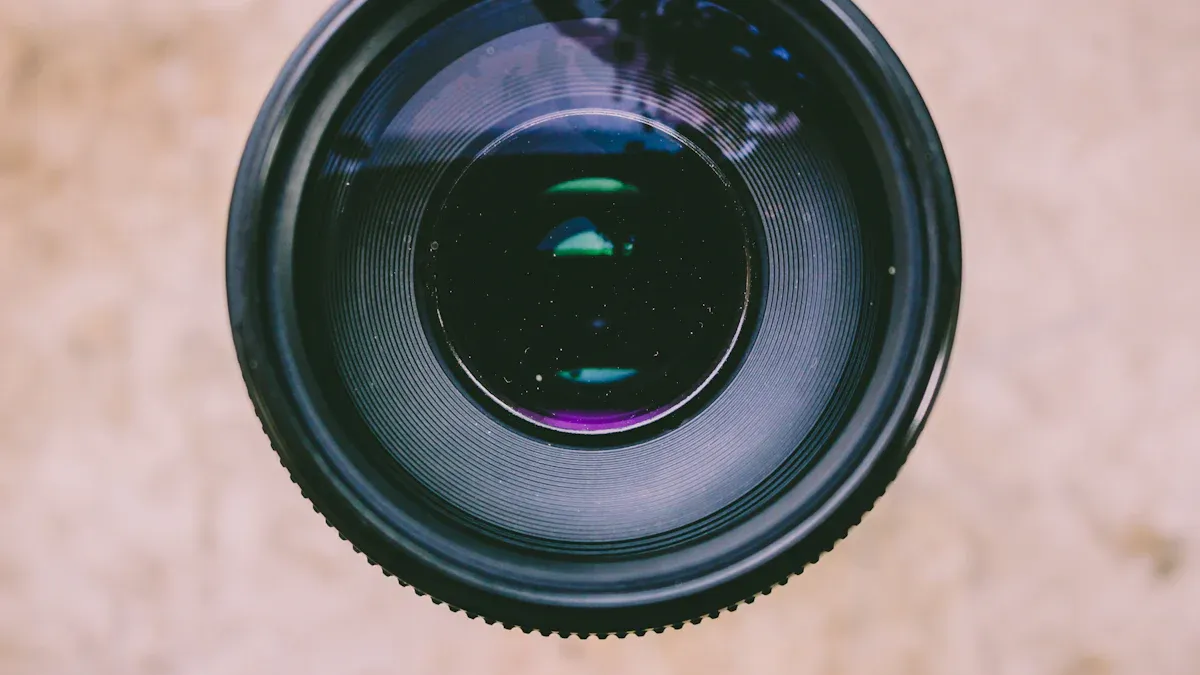How Image Sensor Technology is Evolving in 2025

Image sensor technology advancements are transforming industries with incredible new ideas. By 2025, cars will utilize over 20% of sensors due to the increasing demand for LiDAR and safety tools. AI is integrated into over 30% of these sensors, enhancing the performance of cameras in phones and security systems. Optical neural networks not only save energy but also outperform some computers. These advancements address issues such as poor low-light pictures and blurry images. Smarter computer vision systems are now achievable. New optical components and flexible optical networks further enhance image processing and security.
Key Takeaways
Image sensors will make cars safer by using over 20% more sensors. They will improve tools like LiDAR and crash prevention.
AI in image sensors makes cameras in phones and security systems faster and better.
New methods like pixel grouping and low-noise arrays make pictures clearer, even in dim light.
3D sensing changes industries by giving precise depth details. This is important for self-driving cars and medical uses.
Optical neural networks will speed up image processing and save energy. This helps create smarter imaging tools for many areas.
Image Sensor Technology Advancements in Optical Solutions

High-Resolution Camera Modules and Applications
High-resolution cameras are now key to better image sensors. These cameras give clear and detailed pictures. They are used in healthcare, cars, and phones. Their features show how powerful they are.
Feature | Value |
|---|---|
Quantum Efficiency (QE) | 60% at 850 nm, 40% at 940 nm |
Signal-to-Noise Ratio (SNR1) | 23 nW/cm² at 850 nm, 31 nW/cm² at 940 nm |
Power Use | Uses 3x less power overall |
Dynamic Range | 120 dB |
Low Noise Design | SNR1 of 0.16 lux |
Resolution | HD 1080p |
These features help cameras take better pictures with less noise. They also use less power, which is great for phones and small devices.
Pixel Binning for Versatile Imaging Capabilities
Pixel binning is a new way to improve pictures. It combines nearby pixels to make superpixels. This improves picture quality and reduces noise. It also helps capture fast-moving objects, like in sports or self-driving cars.
Pixel binning speeds up image processing.
Shorter exposure keeps images bright, good for live imaging.
Better signal-to-noise ratio makes low-light pictures clearer.
This method makes cameras work better in many fields, like healthcare and cars.
Metastructures for Superior Color Performance
Metastructures are tiny designs that change how light works. They improve color in pictures. Tests show how well they work:
Metastructures cover 130% of sRGB and 96% of Adobe RGB.
They improve color brightness and purity with tunable shifts.
Blue shifts in reflectance make colors more intense.
These changes help cameras capture brighter and more accurate colors. This is useful for digital photos and augmented reality systems.
Low Sub-Electron Noise Arrays for Better Low-Light Pictures
Low sub-electron noise arrays are a big step forward. They help cameras take clearer pictures in dark places. These arrays cut down noise during picture-taking. This makes images sharper and more detailed in low light. They are very useful for things like security, space photos, and medical scans.
Here are some ways they are measured:
Mean Squared Error (MSE): Shows how much image quality is lost. Lower is better.
Peak Signal-to-Noise Ratio (PSNR): Tells how clear the image is. Higher is better.
Structural Similarity Index (SSIM): Checks if image details look right.
Learned Perceptual Image Patch Similarity (LPIPS): Makes sure pictures look natural to people.
Old methods like ADMM don’t work well with lots of noise. Newer ones like FlatNet and DeepLIR are better but miss small details. Low sub-electron noise arrays keep images clear even in tough conditions. They score high on PSNR and LPIPS, keeping pictures sharp and colorful.
This tech helps computers see better in real-time, even in the dark. It’s great for self-driving cars and security cameras. With this, industries can make smarter and faster systems.
Better Autofocus with Advanced PDAF Methods
Phase Detection Autofocus (PDAF) has gotten much better. New PDAF uses dual-pixel and quad-pixel setups. This makes focusing faster and more accurate. It’s great for sports and nature photography.
Machine learning is now part of PDAF. It studies patterns to guess where to focus. This makes focusing quicker, even on moving things. It also works well in low light, matching low sub-electron noise arrays.
Advanced PDAF has changed how cameras work. It helps with real-time tasks like face recognition and motion tracking. Robots and augmented reality also use it for better focus.
By mixing PDAF with other new tech, cameras are smarter than ever. These changes show how important new ideas are for better imaging tools.
Innovations in 3D Sensing Modules

ToF Technology: dToF vs. iToF Sensors
Time-of-Flight (ToF) technology is key to 3D sensing progress. It measures how long light takes to bounce back from objects. This helps create accurate depth maps. There are two main types of ToF sensors: direct ToF (dToF) and indirect ToF (iToF).
dToF sensors are simple and affordable, making them popular. They provide accurate depth data with less processing power. iToF sensors, however, are better for detailed depth mapping. They are used in fields like healthcare and robotics. While dToF is widely used, iToF is growing in specialized areas.
The market for 3D ToF sensors is growing fast. By 2032, it may reach $10.9 billion, with a yearly growth rate of 13.5%. This growth comes from demand in electronics, cars, and healthcare.
Global Shutter with Pixel-Level Interconnects
Global shutters are great for capturing fast-moving objects without blur. Unlike rolling shutters, they take the whole picture at once. This is important for robots and self-driving cars.
Pixel-level interconnects make global shutters even better. They process signals faster and improve image quality in different lighting. Global shutters also work well with flash, helping in machine inspections.
Key benefits of global shutters include:
No distortion, so images look clear.
Better brightness handling for sunny places.
Fast image capture without blurring.
These features make global shutters essential for advanced vision systems.
Integrated Photonics and FMCW Modules for Collision Avoidance
Integrated photonics combines many optical functions into one chip. This saves energy and makes data transfer more reliable. For example, these chips use only 120 fJ per bit and have very few errors. This makes them perfect for AI tasks needing fast data.
Frequency Modulated Continuous Wave (FMCW) modules work with integrated photonics. They measure distances very accurately, down to millimeters. These modules are great for avoiding collisions in self-driving cars. They help cars detect obstacles and move safely.
Together, integrated photonics and FMCW modules meet the need for real-time 3D sensing. This technology is improving car safety and factory automation.
Uses of 3D Sensing in Cars and Other Areas
3D sensing is changing how cars and other tools work. It helps cars see depth and find objects better. This makes driving safer with tools like crash prevention, smart cruise control, and parking help. These systems use 3D sensing to map depth and spot things quickly.
How well 3D sensing works in cars depends on key factors. These include how far it can see, its view size, speed, and energy use. The table below shows these details:
Performance Factor | Details |
|---|---|
Farthest Range | 25 meters |
Closest Range | 0.1 meters |
View Size | 120° x 90° |
Speed (Frame Rate) | 10 frames per second |
Image Sizes Supported | VGA (640×480), QVGA (320×240) |
Energy Use | 8 watts |
These features help cars work well in cities and highways. A wide view and fast speed let cars see moving people or objects. This lowers crash risks.
Outside of cars, 3D sensing is helping in health, robots, and AR. In health, it helps doctors see better for surgeries. Robots use it to move through tricky spaces. AR devices use it to make cool, lifelike scenes.
When mixed with smart computer programs, 3D sensing gets even better. These programs study pictures fast and help machines make choices. As more industries use this tech, demand will grow. This will lead to smarter tools, safer systems, and better user experiences.
The Role of Optical Neural Networks in Image Sensors
Moving from Centralized to Local AI
Optical neural networks are changing how image sensors work. Old methods use central systems, which are slow and waste energy. Edge-based AI lets sensors process data nearby. This makes them faster and more efficient. It also helps with real-time tasks like self-driving cars and medical scans.
Photonic neural networks are key to this change. They use light to do hard tasks with little energy. For example, they can see tiny details, like bumps just 0.5 mm high. This accuracy is great for robots and factories needing precise vision.
AI-Powered Image Processing for Instant Results
AI has made real-time imaging much better. Optical neural networks help sensors understand pictures quickly. For example, untrained neural networks use simple rules to handle big data. This improves tasks like phase retrieval and microscope imaging, where old methods fail.
In healthcare, AI tools check OCT images in 20 seconds. They find ear infections faster and more accurately. AI also helps doctors predict diseases and review scans. This makes patient care quicker and better. Neural networks in imaging meet the need for fast solutions in many industries.
Making Imaging Faster and More Efficient
Modern imaging needs to be quick and effective. Optical neural networks make this possible by speeding up data work. New systems are 8.2% smaller and cut repeat CT and MRI scans by 61%. This saves time and lowers radiation by 0.27 mSv per patient, equal to skipping 13 chest X-rays.
AI imaging also helps the planet. Cutting extra scans has reduced carbon emissions by 13.5%. These changes show how neural networks improve imaging while helping the environment. With optical neural networks, industries get faster, smarter, and greener imaging systems.
Future Potential of Neural Networks in Image Sensor Technology
Neural networks will change how image sensors work soon. These systems act like the human brain to process data smartly. Optical neural networks use light to do tasks faster and save energy. This makes them perfect for real-time uses like self-driving cars and medical scans.
The need for digital tools is making neural networks popular. Turning paper files into digital ones creates lots of data. Neural networks are great at studying this data with fast computers. They help in tasks needing quick choices, like smart home devices or car vision systems.
The neural network market is growing because of AI and ML. These tools improve real-time data checks for healthcare, cars, and factories. For instance, optical neural networks find product flaws or help doctors spot diseases in scans.
New technology is shaping the future of neural networks. Companies use these systems to work faster and more accurately. In computer vision, they help sensors find objects, see patterns, and predict things better than before.
As neural networks improve, they will make image sensors smarter. They will bring faster and more efficient imaging to many industries.
Image sensor technology is changing industries with amazing new ideas. By 2025, it will solve problems like bad low-light pictures, limited resolution, and slow processing. Optical tools and 3D sensors will make computer vision smarter. This will help in healthcare, cars, and security systems. Neural networks will make image processing quicker and better. For example, future imaging might find tiny tumors, helping doctors treat patients better. These improvements in computer vision will change industries, making them smarter, safer, and more dependable.
What is pixel binning, and why does it matter?
Pixel binning merges nearby pixels into bigger superpixels. This boosts image quality by cutting noise and making pictures brighter. It’s great for snapping fast-moving things and low-light scenes. This makes it perfect for sports photos and self-driving cars.
How do optical neural networks help image sensors?
Optical neural networks use light instead of electricity to work. This saves energy and makes real-time tasks faster. They improve image accuracy, helping in medical scans, self-driving cars, and factories.
Why are 3D sensing modules important for car safety?
3D sensing modules measure how light bounces back to map depth. They help cars spot obstacles, avoid crashes, and move safely. Features like wide views and quick frames make them reliable in cities and highways.
How do low sub-electron noise arrays improve dark pictures?
Low sub-electron noise arrays cut noise when taking pictures. This makes images clearer and sharper in dark places. They’re used in security cameras, space photos, and medical scans where details matter.
What are the benefits of global shutters over rolling shutters?
Global shutters take the whole picture at once, stopping motion blur. They’re great for fast tasks like robots and machine checks. They also handle bright light well, making them useful outdoors and in factories.
See Also
Ensuring Quality in Electronics Through Advancing Technology
MAX8647ETE+T: Improving Display Quality for Smartphones
AD9736BBCZ: Pioneering Innovations in Wireless Technology
Utilizing ADXL357BEZ for Motion Sensing and Stability
Exploring Essential Automotive Features of FREESCALE MCF5251CVM140
CALL US DIRECTLY
(+86)755-82724686
RM2508,BlockA,JiaheHuaqiangBuilding,ShenNanMiddleRd,Futian District,Shenzhen,518031,CN
www.keepboomingtech.com sales@keepboomingtech.com
